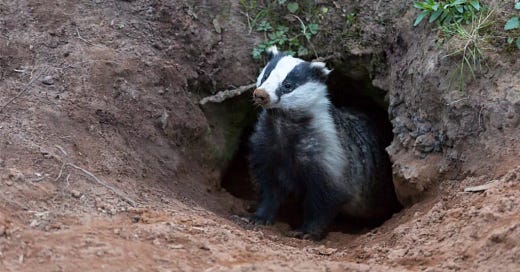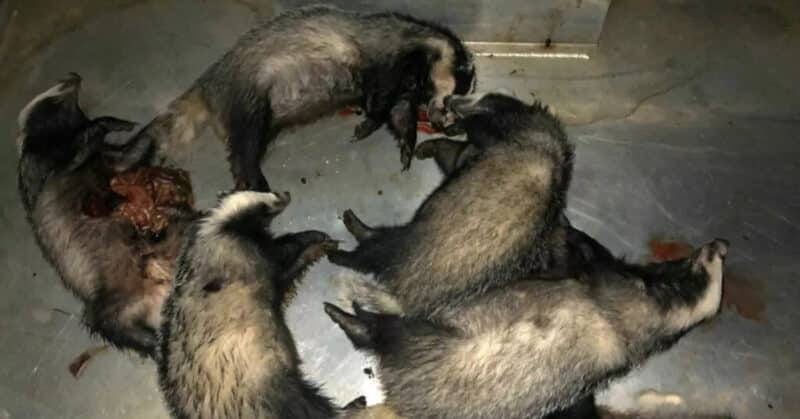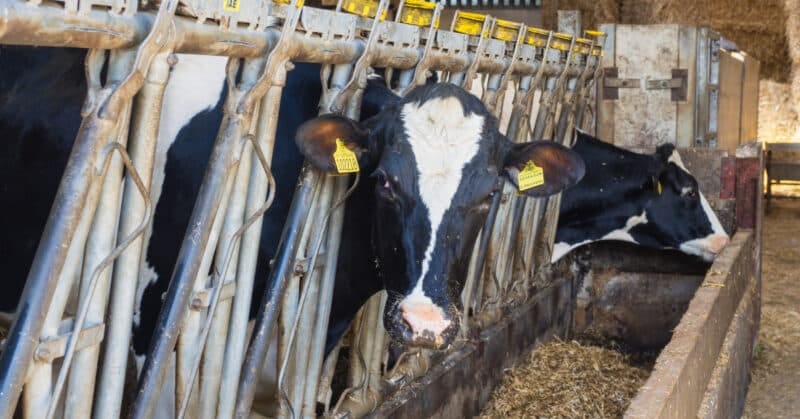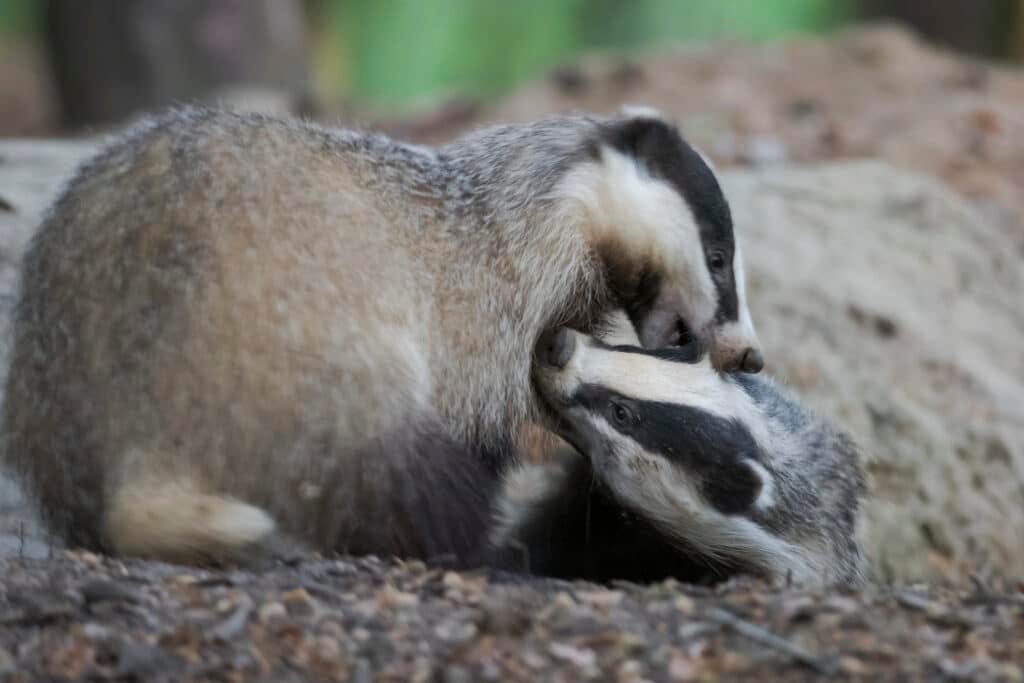The government, influenced by its farming lobby friends in the NFU, continues to scapegoat badgers for the spread of bovine tuberculosis (bTB). Yet it didn’t test one of the 33,627 badgers culled in 2022 for the disease.
Natural England, which works on behalf of Defra, recently published its figures for the number of badgers murdered in the 2022 cull. 40 regions across England were subjected to intensive culling operations in 2022, while a further 29 regions were subjected to supplementary culling. Supplementary licences are issued by Natural England after an area has already been intensively culled for four years.
In its review of the 2022 intensive cull, the agency said:
“The results from 2022 indicate that all 40 badger control companies have delivered the level of badger removal required to be confident of disease control benefits and that the operations were carried out to a high standard of public safety.”
Meanwhile, speaking about the supplementary culling, Chief Veterinary Officer Christine Middlemiss said:
“With Natural England’s Chief Scientist, we have concluded that all 29 areas delivered sufficient levels of effort and coverage required to be confident of achieving disease control benefits…”
Natural England is so convinced that its methods are correct that it doesn’t even bother to test dead badgers for the disease. It said in its review:
“As with 2016 – 2021, post-mortem examination of badgers removed by controlled shooting would only have been carried out by exception in Areas 33 to 72 [all regions subjected to intensive culling]. This year none were requested.”
Nonsensical
Badgers are, by law, one of our most protected species, so the government should be responsible for actually protecting them. To do this, it should take scientific findings, which show that badgers do little to spread bTB in cattle, seriously. Half of the UK’s badger population has now been killed off in the government’s senseless campaign to eradicate the disease, and a number of areas of the country are now facing local badger extinctions. Defra and Natural England should be obliged to test the badgers killed for bTB, so that the public knows whether our much-loved species have died in vain.
Protect The Wild contacted Defra to ask why none of the culled badgers were tested for bTB. Defra replied with bullet points:
We do not routinely test culled badgers from the High Risk and Edge Areas of England. For the 2022 culling operation, this covered areas 33 to 72 [all areas].
Post-mortem examination of badgers removed by controlled shooting would only have been carried out by exception to cover concerns relating to humaneness.
The evidence from the Randomised Badger Culling Trial (RBCT) which ran from 1997 to 2005, indicates that badgers are a significant source of TB in areas with a high incidence of TB in cattle.
Post-mortem testing of badgers between 1998 and 2005 in road traffic accident surveys and the RBCT which stretched from Cornwall to Staffordshire provided evidence of Mycobacterium bovis infection in around one-third of badgers in areas of high incidence of TB in cattle.
There is no reliable, cost-effective method of determining which live badgers are infected with Mycobacterium bovis (M. bovis) and which are not.
In other words, Defra didn’t have a clue which live badgers were infected with bTB in 2022, but indiscriminately murdered them anyway. It did, however, know exactly which cows were infected and the location of the farms. But instead of pointing the blame at the real cause of the spread of bTB – that is, the farmers and their failing industrial farming methods – and introducing cattle-based measures, it scapegoated the badger.
It is now 2023, yet Natural England cites its 18-year-old RBCT as proof that badgers spread bTB to cattle. Experts have exposed the trial as unsafe science, with a number of crucial flaws to it. In fact, back in 2017, ecologist Tom Langton concluded:
“The ISG [Independent Scientific Group which oversaw the trial] should have concluded that the RBCT had failed to find a link between proactive badger culling and a reduction in bTB herd breakdowns – the exact opposite of its finding.”
“Significant reduction” in bTB?
Defra told Protect The Wild:
“Our bovine TB eradication strategy has led to a significant reduction in this insidious disease.”
It continued:
“The UK Chief Veterinary Officer and Chief Scientific Adviser have confirmed that TB incidence in cattle in cull areas is down 45% after three years of culling and down 50% after four years of culling.”
But the government department didn’t provide us with any link to prove this point, nor did it prove that badger culling was the reason for this decrease (rather than, for example, better farming practices).
If we look at government statistics, we can see that the prevalence rate of bTB in herds was 5% in December 2020, 4.6% in December 2021, and 4.5% in December 2022. Hardly a significant decrease. The statistics also show that the number of cows in England slaughtered due to bTB infection in 2022 decreased by just 20% on the previous year. Meanwhile, the number of cows killed in 2021 decreased by only 1% from 2020.
An in-depth study, independent of government funding, was published in the Veterinary Record in early 2022. The results, analysed by the Canary, proved that government rhetoric is nonsense. It found that:
“areas with culls generally had higher incidences and prevalence of bTB than areas without badger killing.”
The study analysed 30 cull zones between 2009 and 2020 and the results were handed to the government. But according to one of the study’s authors, Tom Langton, the findings were promptly dismissed by the government as “inferior to their highly modelled approach using undisclosed data”.
Badgers don’t spread bTB to cows
On top of all this, there is little evidence to suggest that badgers spread bTB to cows, anyway. The Badger Trust states that more than 94% of bTB transmission in herds is cow-to-cow. The Trust said:
“Cattle spread bovine TB to other cattle in over 94% of all cases of the disease. There is a huge amount of scientific evidence and field studies to show that the vast majority of bTB infection in cattle is a result of cow-to-cow infection.
Bovine TB is largely spread cow-to-cow within intensive dairy and beef production systems. It spills over into the wider environment as a form of industrial pollution through faeces and slurry soil, water, organisms and infecting both wild and domestic animals.”
Even Farmers Weekly admitted in 2019 that:
“Cows are almost twice as likely to be infected by other cattle than by badgers in the transmission of tuberculosis.”
Very few badgers have bTB
Defra told Protect The Wild that “there is no reliable, cost-effective method of determining which live badgers are infected.” But one study of areas in England which had medium risk of bTB, funded and published by Defra itself, has analysed the prevalence of the disease in road-kill badgers in England. Although it wasn’t a study of live badgers, the findings – showing the rate of bTB in dead badgers – surely correlate with the living population. The study was completed in 2018, but Defra sat on the results, only publishing them in 2020. The study found that in southern England, only 1% of 312 badgers had bTB. In the north, 1 in 12 badgers had bTB, but 92% of them were only latently infected. i.e. not showing symptoms and non-infectious. Of course, Defra quietly ignores this study when it is asked why it sanctions the murder of badgers.
And between 2013 and 2019, 900 badgers killed in the cull were tested for bTB. The Badger Trust reported that:
“Less than 5% were found to have bovine TB to a degree where they posed a risk of infecting other badgers or possibly cattle.”
It’s safe to assume, then, that the majority of the 33,627 badgers culled in 2022 were bTB-free, or were only latently infected and posed no threat to cows. Any decrease in bTB in cows is likely to have come from a change in farming methods, such as improved bTB testing, cattle movement controls and biosecurity measures.
From this, we can also assume that the government didn’t want to test 2022’s dead badgers because the results would have proven, once again, that most of them are bTB-free, and that the cull is, in fact, a criminal act.
Badger and cow vaccinations
Defra also told Protect The Wild:
“As a result of the progress made, we are now able to move onto the next phase of the long-term eradication strategy, including wider badger vaccination, alongside improved cattle testing and work towards deployment of a cattle vaccine. We have always been clear we do not want to continue the badger cull longer than necessary.”
It continued:
“A top priority for government is to develop a deployable cattle TB vaccine. Field trials of the vaccine and a new DIVA skin test to detect infected among vaccinated cattle started in 2021 and are ongoing.”
But as we recently reported, the government has pulled funding for vaccinating badgers. The Badger Edge Vaccination Scheme (BAVS) was due to run from 2019 to 2023, and provided some funding towards private projects to vaccinate badgers in the so-called ‘Edge Area’ – that is, the buffer zone between the areas with cattle at a high risk of bTB, and those with a low risk of the disease. Speaking about the government’s decision to end funding, Nottinghamshire Badger Trust said:
“The decision, made with just a week’s funding remaining, has left the Trust with no option but to end the project.”
As for cow vaccinations, campaigners have pointed out that the government hasn’t made enough effort to roll out a vaccine. Jim Ashley of Shropshire Badger Group argued:
“Scientists have been working for the last 25 years on developing a vaccine for cattle and it is blindingly obvious that this vaccine should be urgently introduced to end the misery of bTB for farmers and our native wildlife. We saw how quickly a vaccine was developed against Covid when the political will was there.”
No end to the cull, despite what Defra says
Defra told Protect The Wild:
“We are delivering the end of the current large-scale badger culling policy with 2022 being the last year of new intensive culling licences.”
2022 might have been the final year for issuing four-year intensive culling licences, but Natural England has been found to be covertly increasing the boundaries of existing cull zones without any public consultation. As we have previously reported, the agency expanded one Avon zone by a massive 136km² in 2021. This is particularly worrying for 2023 onwards because even though no new licences can be issued, there’s no guarantee that Natural England won’t just expand areas of the existing cull zones, anyway. It is, in effect, creating new cull zones without having to issue licences.
Defra went on to talk about a “phased transition” away from badger culling, saying:
“We propose to deliver a targeted approach to future badger disease control which includes a provision for culling only in the worst affected areas and where the epidemiological evidence points to an ongoing role of badgers in the disease.”
This so-called “phased transition” enabled Natural England to issue 10 new supplementary licences in 2022 to areas in England that had already come to the end of their intensive culling phase. A total of 29 areas were culled in 2022 through these supplementary licences.
On top of this, Natural England is likely to issue licences indefinitely to kill badgers at a targeted, local level from 2026, although it currently isn’t clear what the system will be. It is clear that for the government, rather than implementing a “phased transition” away from the cull, it is keen to continue with business as usual.
Propaganda
Defra’s line that the cull is “helping to turn the tide on bovine tuberculosis (bTB)” isn’t anything new. Despite irrefutable evidence presented to the government that the cull doesn’t work, that badgers don’t spread bTB, and that only a minimal amount of badgers have bTB anyway, it has parroted the same propaganda for years.
Former Badger Trust CEO Dominic Dyer said back in 2016:
“The government has demonised badgers for political purposes and is now killing them – at huge cost to the taxpayer – as a political fig leaf to the farming lobby, to mask failures going back more than 40 years in the management of bovine TB in cattle.”
It is evident that since then, absolutely nothing has changed. Rather than murdering badgers, the government needs to target the farmers responsible. The Badger Trust’s Sally Jones hit the nail on the head when she said:
“Epidemiological research has demonstrated that as few as 20% of farms are responsible for 80% of cattle movement, and large farms with over 1000 trade connections act as hubs for spreading disease. Why kill badgers when there is evidence of where to target stricter measures to protect the farm sector?”
The government has blood on its hands. It is responsible for every single one of the 210,555 badgers who have lost their lives since the cull began. We mourn their losses, and with sadness and anger we will continue to fight the cull.






